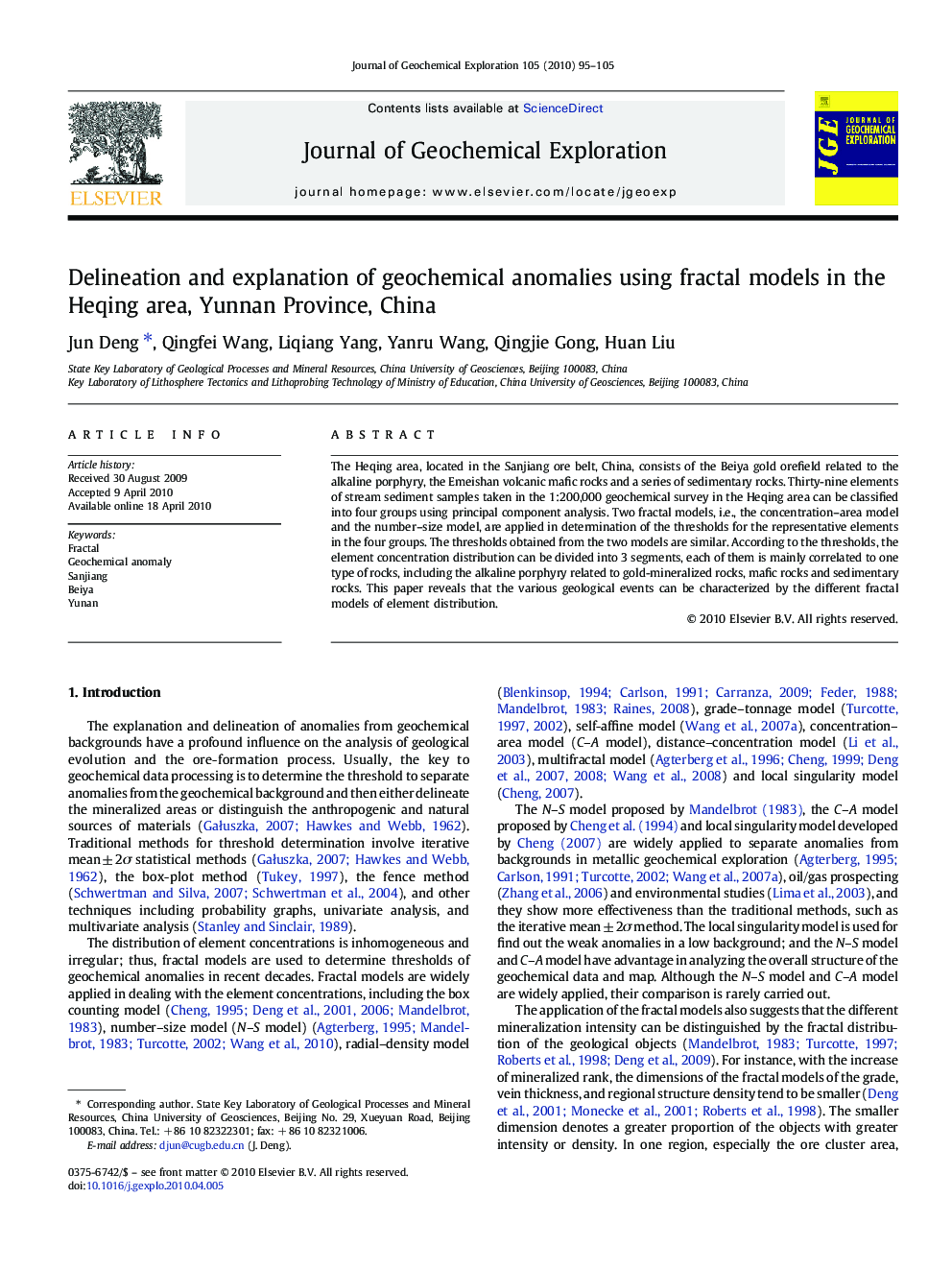| Article ID | Journal | Published Year | Pages | File Type |
|---|---|---|---|---|
| 4457976 | Journal of Geochemical Exploration | 2010 | 11 Pages |
The Heqing area, located in the Sanjiang ore belt, China, consists of the Beiya gold orefield related to the alkaline porphyry, the Emeishan volcanic mafic rocks and a series of sedimentary rocks. Thirty-nine elements of stream sediment samples taken in the 1:200,000 geochemical survey in the Heqing area can be classified into four groups using principal component analysis. Two fractal models, i.e., the concentration–area model and the number–size model, are applied in determination of the thresholds for the representative elements in the four groups. The thresholds obtained from the two models are similar. According to the thresholds, the element concentration distribution can be divided into 3 segments, each of them is mainly correlated to one type of rocks, including the alkaline porphyry related to gold-mineralized rocks, mafic rocks and sedimentary rocks. This paper reveals that the various geological events can be characterized by the different fractal models of element distribution.
